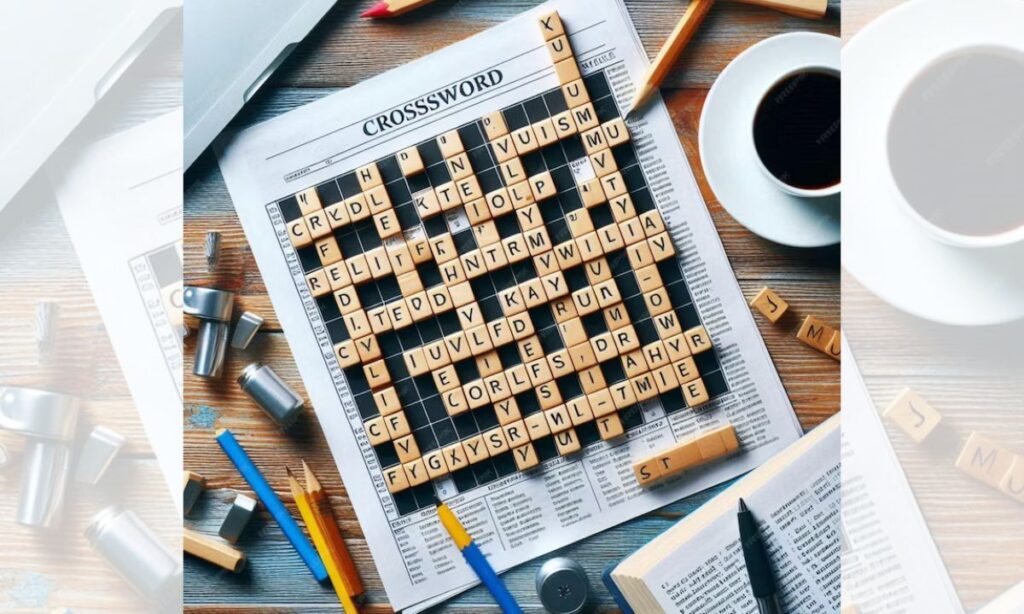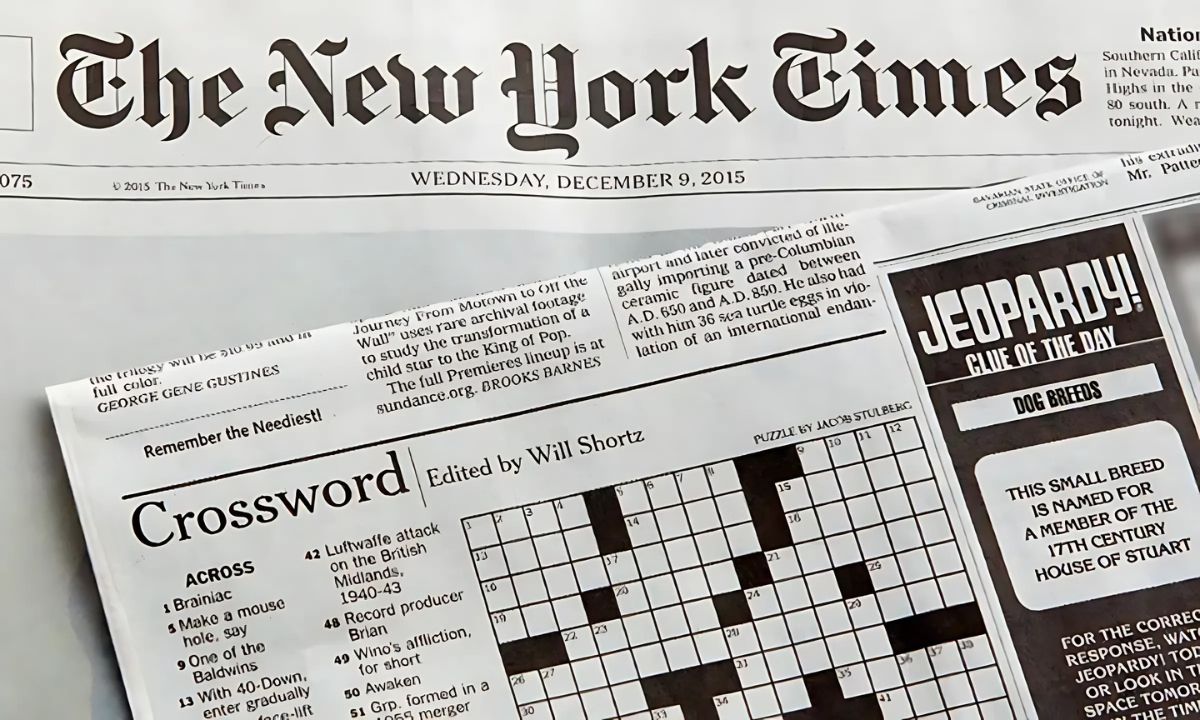Picture this: It’s a lazy Sunday morning, and you’re curled up with your favorite mug of coffee, ready to tackle the New York Times crossword puzzle. As you scan the clues, your eyes land on a familiar yet puzzling phrase: “122 is the record for humans.”
If you’re scratching your head, you’re not alone. This cryptic clue has become a staple in the NYT Crossword, sparking curiosity and challenging solvers for years.
Let’s dive into the fascinating world of crossword puzzles and unravel the mystery behind this recurring clue.
The Fascinating History of the Record for Humans in NYT Crossword
The New York Times Crossword, a cultural institution since its debut in 1942, has evolved into a daily ritual for millions. Under the expert guidance of puzzle editor Will Shortz, the crossword landscape has seen a renaissance, with clever wordplay and contemporary references becoming the norm.
The clue “122 is the record for humans” first appeared in the early 2000s, quickly becoming a favorite among constructors and a delightful challenge for solvers. Its origins lie in the crossword community’s fascination with human achievements and the limits of our capabilities.
“A great clue should be both challenging and fair, offering a satisfying ‘aha!’ moment when solved,” says Will Shortz, the NYT Crossword editor since 1993.
This particular clue embodies that philosophy perfectly. It’s concise, yet loaded with meaning, requiring solvers to think beyond the literal interpretation and delve into the world of human records.
The Evolution of NYT Crossword Clues
The inclusion of “122 is the record for humans” marks a shift in crossword puzzle design. Historically, NYT Crosswords relied heavily on straightforward definitions and general knowledge. However, as solving techniques improved and the crossword community grew more sophisticated, constructors began to incorporate more wordplay, misdirection, and contemporary references.
This evolution reflects broader changes in the crossword landscape:
- Increased diversity in themes: Modern puzzles often feature creative, multi-layered themes.
- Pop culture integration: References to current events, celebrities, and modern slang have become more common.
- Emphasis on clever wordplay: Clues now frequently employ puns, anagrams, and other linguistic tricks.
- Digital solving platforms: The rise of online solving has influenced clue writing and puzzle design.
The “122 is the record for humans” clue exemplifies this modern approach, blending trivia, wordplay, and a touch of mystery.
The Story Behind the Number 122

So, what exactly does 122 refer to in the context of human records? Brace yourself for a journey into the realm of extreme human achievements.
122 years is the record for the oldest verified human lifespan.
This astounding record belongs to Jeanne Louise Calment, a French woman who lived from February 21, 1875, to August 4, 1997. Her life spanned three centuries, witnessing incredible historical events and technological advancements.
Here’s a quick breakdown of this remarkable achievement:
- Birth: February 21, 1875, in Arles, France
- Death: August 4, 1997, also in Arles, France
- Age at death: 122 years and 164 days
- Notable fact: She met Vincent van Gogh in 1888 when she was 13 years old
Calment’s record has stood the test of time, remaining unbroken despite advancements in medical science and increased global life expectancy. This longevity record has captured the imagination of crossword constructors, becoming a go-to clue for puzzle enthusiasts.
The Significance of Calment’s Record
Jeanne Calment’s extraordinary lifespan isn’t just a fascinating trivia fact; it’s a subject of intense scientific interest. Researchers in gerontology and related fields have studied her case extensively, seeking insights into the factors that contribute to extreme longevity.
Some key points about Calment’s life and its scientific significance:
- Lifestyle factors: Calment attributed her longevity to a diet rich in olive oil, port wine, and chocolate. She also remained physically and mentally active throughout her life.
- Genetic considerations: Scientists have speculated about potential genetic factors that may have contributed to her exceptional lifespan.
- Historical context: Calment’s life provides a unique window into historical changes, from the late 19th century to the dawn of the digital age.
- Verification process: Extensive research was conducted to verify Calment’s age, setting a high standard for age validation in supercentenarians.
The enduring nature of this record, combined with its scientific intrigue, makes it a perfect fit for the intellectual challenge of the NYT Crossword.
Tips for Solving the Record for Humans Clue
When you encounter “122 is the record for humans” in your next NYT Crossword, keep these solving strategies in mind:
- Look for three-letter answers: The most common solution is “AGE,” referring to the record human lifespan.
- Consider variations: Sometimes the clue might be phrased differently, like “Human record of 122” or “122 years, for humans.”
- Think about context: If surrounding clues relate to longevity, records, or human achievements, it’s likely referring to the age record.
- Remember common crossword conventions: Numbers are often spelled out in crossword answers, so “ONETWENTYTWO” could be a potential longer answer.
By familiarizing yourself with this clue, you’ll boost your solving speed and confidence, inching closer to your own personal solving record!
Advanced Solving Techniques
For those looking to elevate their crossword solving skills, here are some advanced techniques:
- Cross-referencing: Pay attention to how clues might relate to each other within the puzzle.
- Theme awareness: Sunday puzzles often have overarching themes that can provide context for trickier clues.
- Wordplay detection: Train yourself to spot anagrams, homophones, and other common wordplay devices.
- Expand your knowledge base: Regular reading on diverse topics can improve your ability to tackle a wide range of clues.
Remember, solving speed isn’t everything. Many crossword enthusiasts find joy in the process of unraveling each clue, savoring the mental challenge it presents.
Notable Instances of the Record for Humans Clue in Past NYT Crosswords

The “122 is the record for humans” clue has made numerous appearances in NYT Crosswords, often in clever and unexpected ways. Here are some memorable instances:
- Monday, March 15, 2010: Used as “Human record of 122” for the answer “AGE”
- Thursday, September 22, 2016: Appeared as “122, for humans” in a puzzle with a time theme
- Sunday, July 8, 2018: Featured in a larger theme about world records
These appearances showcase how versatile and enduring this clue has become in the crossword world. It’s a testament to the crossword community’s appreciation for wordplay and human achievements.
Case Study: The Sunday Puzzle of July 8, 2018
Let’s take a closer look at how the “122 is the record for humans” clue was incorporated into a larger theme:
- Puzzle Theme: “Record Breakers”
- Relevant Entries:
- “122 IS THE RECORD FOR HUMANS” (3 letters, Answer: AGE)
- “OLDEST PERSON EVER” (15 letters, Answer: JEANNECALMENT)
- Other theme entries included various world records in sports, science, and pop culture
This puzzle demonstrated how a single clue can be expanded into a broader theme, challenging solvers to connect different pieces of information and appreciate the context of human achievements.
How to Use Wordplay and Context to Solve Tricky Clues?
Mastering the art of solving tricky clues like “122 is the record for humans” requires a blend of knowledge, intuition, and wordplay skills. Here are some techniques to sharpen your solving abilities:
- Break down the clue: Analyze each word. “Record” often hints at superlatives or extremes.
- Look for double meanings: In crossword puzzles, words like “record” can refer to both achievements and musical recordings.
- Consider abbreviations: NYT could stand for New York Times, but it might also be a clue for “now” in texting lingo.
- Practice, practice, practice: The more puzzles you solve, the more familiar you’ll become with common crossword conventions and wordplay techniques.
Remember, every clue is a miniature puzzle within the larger crossword. Approach each one with curiosity and a willingness to think outside the box.
The Art of Misdirection in Crosswords
Crossword constructors often employ misdirection to make clues more challenging and entertaining. Here are some common techniques:
- Question mark clues: A question mark at the end of a clue often signals wordplay or a pun.
- Capitalization tricks: Capitalized words might not always refer to proper nouns.
- Temporal shifts: Words like “initially” or “finally” might refer to the first or last letters of a word.
- Homophones: Clues might play on words that sound alike but have different meanings.
Understanding these techniques can help you approach tricky clues with a more discerning eye, enhancing your solving experience.
The Broader Impact of Crossword Puzzles on Cognitive Health

While we’ve focused on the specific clue “122 is the record for humans,” it’s worth considering the broader impact of crossword puzzles on cognitive health and well-being. Numerous studies have suggested that regularly engaging in mentally stimulating activities like crossword solving may have positive effects on cognitive function, especially as we age.
Some potential benefits of crossword solving include:
- Improved vocabulary and language skills
- Enhanced problem-solving abilities
- Increased mental flexibility
- Better memory retention
- Reduced stress and anxiety
While crossword puzzles shouldn’t be considered a cure-all for cognitive decline, they offer an enjoyable way to keep our minds active and engaged. The challenge presented by clues like “122 is the record for humans” encourages us to think creatively and draw connections between different pieces of information – skills that can be valuable in many areas of life.
Conclusion about 122 is the record for humans nyt
As we’ve explored, the clue “122 is the record for humans” is more than just a trivia fact – it’s a window into the fascinating world of human achievement, longevity, and the art of crossword construction. This seemingly simple phrase encapsulates the essence of what makes the NYT Crossword so engaging: it challenges us to think creatively, draw on our knowledge, and sometimes, learn something new.
Whether you’re a seasoned solver or a crossword newbie, understanding the story behind this clue adds another layer of appreciation to your puzzle-solving experience. So the next time you see “122 is the record for humans” staring back at you from the pages of the New York Times, you’ll be armed with the knowledge to crack the code and maybe even set a personal solving record of your own.
Remember, in the world of crosswords, every clue is an opportunity to learn, grow, and challenge yourself. Happy solving!
FAQs about 122 is the record for humans nyt
Is 122 a record for humans?
Yes, 122 years is the record for the oldest verified human lifespan, set by Jeanne Louise Calment.
What travels through air at roughly 1125 feet per second?
Sound travels through air at approximately 1125 feet per second at sea level and room temperature.
What is the quick summary of the NYT Mini?
The NYT Mini is a smaller, quicker version of the New York Times crossword puzzle, typically 5×5 squares and designed to be solved in a few minutes.
What is the average time to solve the nyt mini?
The average solving time for the NYT Mini varies, but most solvers complete it in 1-2 minutes. Experienced solvers often finish in under a minute.
Color:z5h7b7ciuws= orange : Unveiling the Power, Psychology, Technology, and DIY Magic








